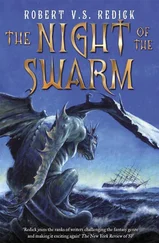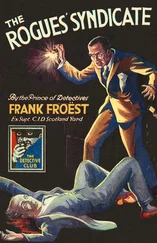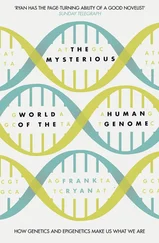'. . . had a glass or two,' Johanson finished for him. He got up, and the blood rushed to his head. Angeli was there in an instant, holding his elbow. 'I'm OK, thank you.' Johanson shook him off 'Where am I anyway?'
'In the infirmary. Can you manage?'
'Provided you give me those aspirin.'
Angeli walked over to a shiny white cabinet and took out a packet of painkillers.
'Here you go. You hit your head, that's all. You'll soon feel fine.'
'OK. Thanks.'
'Are you sure you're all right?'
'Yes.'
'And you can't remember anything?'
'Like I said, no.'
' Va bene .' Angeli gave a wide smile. 'Take things gently today, Dottore, and if you experience any problems, don't hesitate to come back.'
FLAG COMMAND CENTER
'Hypervariable sections? What the hell's that supposed to mean?'
Vanderbilt was struggling to keep up. Oliviera realised that she was in danger of losing her audience. Peak looked bewildered too. Li's expression was as inscrutable as ever, although it seemed likely that her knowledge of genetics was under severe strain.
Johanson sat among them like a ghostly presence. He'd turned up late, as had Rubin, who'd come in mumbling apologies for his absence. But, unlike Rubin, Johanson seemed genuinely ill. His gaze was unsteady and he kept glancing around, as though he needed to reassure himself every few minutes that he wasn't hallucinating and that the people around him were real. Oliviera made a mental note to have a word with him.
'It might be easier if we started by talking about normal human cells,' she said. 'You can think of our cells as bags of information wrapped in membranes. Inside each cell is a nucleus, and inside the nucleus are the chromosomes – home to our genes. The genome is the complete set of genetic information, the full sequence of DNA, the famous double helix. In simple terms, it's our design plan. The more complex an organism, the more sophisticated the plan. The results of a DNA test can be used to find someone's killer or prove that people are biologically related, but by and large we all share the same blueprint: feet, legs, torso, arms, hands and so on. In other words, an individual's DNA can tell you two things: first, that they're a person; and second, who they are.' She saw interest in their faces. It had been a good idea to start with some basic genetics.
'Of course, two individual humans will have less in common than two single-cell organisms of the same species. Statistically speaking, there'll be three million small differences between my DNA and the DNA of any other person in this room. Human beings are differentiated from one another by roughly one difference per twelve hundred base pairs. What's more, if you were to take two different cells from the same individual, you'd still find small variations -biochemical discrepancies in the DNA, caused by mutations. Consequently, the results will be different if you analyse a cell from my left hand and one from my liver. But the DNA will tell you clearly that those cells belong to Sue Oliviera.' She paused. 'Single-cell organisms are a slightly different story. The cell is the entire organism. So there's only one genome, and since single-cell organisms reproduce asexually, there are no parent cells to pass on their chromosomes. It works by cell division. The organism duplicates itself and all its genetic information.'
'So, as far as single-cell organisms are concerned, if you know one DNA sequence, you know them all,' said Peak, choosing his words carefully.
'Yes.' Oliviera rewarded him with a smile. 'That's what you'd expect. A population of single-cell organisms should have largely identical genomes. Apart from a minimal rate of mutation, their DNA should be the same.'
She saw Rubin shifting impatiently on his chair, desperate to speak. Usually he would have tried to butt in by now and take the lead. Poor Mick, thought Oliviera, in satisfaction. What a shame you were confined to your bed last night with a migraine. For once there's something you don't know.
'But that's exactly the problem,' she continued. 'At first glance, the cells in the jelly appear identical. They're amoebas – not even a particularly exotic variety, just ordinary deep-sea amoebas. But it would take at least two years and a whole army of computers to decode their DNA in full, so we settled for analysing a diagnostic section. We isolated the DNA and amplified key regions for sequencing. We call them amplicons. Each amplicon contains a sequence of base pairs – the language of genetics. Now, when we compare amplicons from DNA belonging to different individual organisms, we see something interesting. Amplicons of different organisms belonging to the same population should look something like this.'
She held up a print-out that she'd blown-up for the meeting:
Al: AATGCCAATTCCATAGGATTAAATCGA
A2: AATGCCAATTCCATAGGATTAAATCGA
A3: AATGCCAATTCCATAGGATTAAATCGA
A4: AATGCCAATTCCATAGGATTAAATCGA
'So you see, entire segments of the DNA can be exactly the same. Four identical single-cell organisms.' She put down the sheet and picked up another. 'But instead we got this.'
Al: AATGCCA CGATGCTACCTGAAATCGA
A2: AATGCCA ATTCCATAGGATTAAATCGA
A3: AATGCCA GGAAATTACCCGAAATCGA
A4: AATGCCA TTTGGAACAAATAATCGA
'Those are the base sequences of four amplicons from four of our jelly organisms. The DNA looks identical – until you hit brief hypervariable segments, where it all goes haywire. There's no pattern whatsoever. We've examined dozens of cells. Some differ only marginally in the hypervariable sections, but others are radically different. It can't be accounted for by the background mutation rate. In other words, the variations aren't coincidental.'
'Maybe this isn't a single species, after all,' said Anawak.
'No, it's definitely the same species. And there's definitely no way an organism can change its genetic coding in the course of its lifetime. The design plan comes first. Organisms are built according to their design plan, and once they're built, they correspond to that plan and no other.'
There was a long silence.
'But if, in spite of all that, the cells are still different,' said Anawak, 'they must have found a way of changing their DNA after they divided.'
'But for what purpose?' asked Delaware.
'A human purpose,' said Vanderbilt.
'Human?'
'Are you all deaf or something? Nature doesn't do this stuff. That's what Dr Oliviera said, and I haven't heard any objection from Dr Johanson. So who's got the nerve to cook this shit up? Those jelly cells are a biological weapon. Only humans could do a thing like this.'
'In that case, objection ,' said Johanson. He ran his hand through his hair. 'It doesn't make sense, Jack. The advantage of biological weaponry is that you only need one recipe. Reproduction takes care of the rest.'
'But surely it's an advantage when a virus mutates. The AIDS virus is mutating all the time. Whenever we start to get wise to it, hey presto, it's changed its form.'
'That's different. We're dealing here with a superorganism, not a virological infection. There's got to be some other explanation as to why the cells are different. Something happens to their DNA after they divide. They're coded differently. Who cares what's responsible for making them do that? We need to find out why .'
'To kill us, of course,' Vanderbilt said angrily. 'The purpose of this gunk is to destroy the democratic world.'
'OK then,' growled Johanson, 'why don't you shoot it? I mean, maybe they're Islamic cells. Extremist DNA. That would make sense.'
Vanderbilt stared at him. 'Whose side are you on?'
'The side of understanding.'
'Well, I'm not sure I understand how you came to fall over last night.' Vanderbilt gave a smug smile. 'Maybe it had something to do with that bottle of Bordeaux… How are you feeling, Dr Johanson? Is your head OK? Maybe you should shut up and listen for a while.'
Читать дальше












